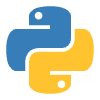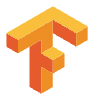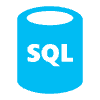Freelance Data Scientists: Do You Really Need One for Your Project?

Freelance Data Scientists: Do You Really Need One for Your Project?
Roadmap
1. Faster Project Setup
Clear Timelines
Minimal Onboarding
2. Specialized Expertise
Rare Skill Sets
Adaptable Approaches
3. Flexible Budgeting
Managed Costs
4. Variety of Project Scopes
Incremental Updates
5. Collaboration Tips for Seamless Results
Clear Goals
Efficient Feedback
FAQs About Freelance Data Scientists
Is freelance data science worth it?
How much do freelance data scientists charge?
Can data scientists work independently without a full team?
A Few Last Thoughts
Freelance Data Scientists: Do You Really Need One for Your Project?
A lot of people I talk to—especially startup founders and product leads—reach out with the same question: “Would bringing on a freelance data scientist actually help, or just add complexity?” I get it. There’s a lot of noise out there, and the line between “nice-to-have” and “essential” can get blurry.
I’ve been freelancing in data science for a while now, mostly working on short-term projects that need quick analysis, custom models, or just a second pair of eyes on messy data. Some clients need a few weeks of help, some need a few months, and a few just want a prototype built before deciding their next move.
The reality is, not every project benefits from a freelancer, and not every team actually needs outside help. But there are plenty of cases where it makes more sense than hiring full-time—especially if you’re still figuring things out, don’t have internal bandwidth, or need niche skills.
This article walks through the key reasons companies work with freelance data scientists—and where it doesn’t always make sense. It’s based on real questions I’ve gotten from clients and what I’ve seen work (and not work) out in the wild.
Roadmap
Here’s a quick roadmap 🧭 to help you explore the sections that match where you are in your decision-making process:
Overview of Key Sections
1. Faster Project Setup
2. Specialized Expertise
3. Flexible Budgeting
4. Variety of Project Scopes
5. Collaboration Tips for Seamless Results
FAQs About Freelance Data Scientists
A Few Last Thoughts
Each section tackles one specific angle of freelance data work—from timelines and budgets to collaboration and scope. You can jump between them as needed.
1. Faster Project Setup
Freelance data scientists can often begin work within days, not weeks. Unlike traditional hiring, projects don’t require lengthy approval processes or onboarding pipelines. On a platform like Contra, clients can connect directly with freelancers, agree on terms, and get started—without waiting for recruiter handoffs or procurement delays.
Because freelancers operate independently, they’re used to jumping into unfamiliar environments quickly. Many of us already have our toolkits ready—whether it’s Python scripts, SQL notebooks, or cloud environments. Once the scope is clear, work starts. No internal systems access? No problem. We build around that.
“The kickoff call was on Tuesday, and by Friday I had a working dashboard in front of the product team. That just doesn’t happen with full-time hires.” — actual message from a client last fall
Clear Timelines
Freelancers generally work with fixed deliverables and deadlines. It’s common to scope out a 2-week sprint for exploratory analysis or a 6-week timeline for a predictive model. We’re used to setting clear milestones up front and sticking with them—especially when billing is tied to deliverables.
Minimal Onboarding
There’s no waiting for IT tickets or orientation sessions. Most freelance projects begin with a short briefing, a shared doc, and a Slack invite. Contracts are often handled in a few clicks, especially on commission-free platforms like Contra, where bureaucratic hurdles are minimal.
2. Specialized Expertise
Freelance data scientists often focus their skills in highly specific areas like machine learning, natural language processing (NLP), and predictive analytics. These are not generalists—they've usually spent years refining models, tuning hyperparameters, and solving real-world problems in a specific domain. For example, I’ve worked on customer churn models for SaaS startups, as well as NLP pipelines for text classification in healthcare.
Because freelancers typically work across multiple projects and industries, they’re exposed to a wider range of tools and use cases than someone embedded in a single company. This experience gets reused—what works in e-commerce segmentation can sometimes be adapted to content personalization in media or lead scoring in B2B sales.
“You’ve done this exact thing before, right?” — something I hear almost every time I get on a kickoff call
Rare Skill Sets
Some clients bring in freelance help when they hit a skills ceiling internally. For instance, a team might be strong in data visualization but lack experience with time-series forecasting or large language models (LLMs). As a freelancer, I’ve been hired just to build or validate a model that no one on the team had time—or knowledge—to tackle.
This type of work often fills a gap rather than replaces an in-house role. I’ve handled standalone components like entity extraction, anomaly detection, or edge-case debugging in production pipelines.
Adaptable Approaches
Freelancers also tend to bring hybrid thinking. I’ve applied fraud detection techniques from fintech to insurance claims, and used computer vision tools from retail to track lab equipment usage in biotech.
Patterns repeat. The data changes. The underlying logic often doesn’t. That’s one reason why freelance data scientists frequently build faster prototypes—they’ve seen something similar before, just in a different context.
3. Flexible Budgeting
Hiring a freelance data scientist often reduces overhead compared to bringing on a full-time employee. For short-term or project-specific work, the cost difference becomes more noticeable. Freelancers typically charge by the hour or per project, and there are no added expenses like benefits, office space, or internal onboarding.
Freelance data science rates vary. Entry-level freelancers might charge $50–$100/hour, while specialists in areas like deep learning or time-series forecasting may reach $200–$300/hour. On average, a 3-month project requiring 300 hours at $150/hour totals $45,000. A full-time employee performing the same work, factoring in salary plus benefits, could cost $80,000–$100,000 over the same period.
“If the project lasts under six months, freelancers tend to be cheaper. After that, the math starts shifting.” — something I bring up early with clients
Platforms like Contra make it easier to manage these costs. Since Contra doesn’t charge commission fees, freelancers keep their full rate, and clients don’t pay extra on top. This makes the budget more predictable and eliminates hidden costs.
Managed Costs
Freelance work involves direct payments—no middlemen, no markups. You agree on the scope, the rate, and the payment structure. That might be hourly, per milestone, or full project-based. This structure gives both sides clarity.
Rates are negotiable. For example, I’ve lowered my rate slightly for clients with ongoing multi-phase projects, while charging more for short, high-pressure turnarounds. Most freelancers adjust based on complexity, timeline, and reuse of existing code or models.
The lack of long-term commitment also simplifies planning. If a project wraps early, there’s no sunk cost in staffing. If the scope expands, budgets can scale accordingly. This flexibility helps clients avoid overhiring or underutilizing internal teams during slower periods.
⏳ Short-term work aligns better with freelance contracting. Longer engagements—especially beyond 6–9 months—can often be more cost-effective with a full-time internal hire.
4. Variety of Project Scopes
Freelance data scientists often take on projects that range in size from one-off tasks to multi-phase machine learning builds. Some projects last a few days and focus on cleaning and structuring raw data. Others might span several months, involving end-to-end development of forecasting models, recommendation systems, or NLP pipelines.
A client might start with a simple goal like identifying missing data in sales reports. If the results are useful, the scope often expands—adding trend analysis, customer segmentation, or even integrations with live dashboards. This flexibility is typical for freelance work. There’s no need to lock in a year-long contract just to explore a dataset.
“We started with deduplicating customer records. By the end, I was running a churn prediction model in production.” — a client from a 6-week retail data project
It’s also common for clients to bring in freelance data scientists to validate internal work. This includes cross-checking assumptions, replicating model results, or testing alternate approaches. These scoped audits can be standalone or part of larger initiatives.
Some industries use freelancers for highly specific tasks. In healthcare, that might mean cleaning EHR exports for compliance. In manufacturing, it could involve building a predictive maintenance model for sensor data. In e-commerce, freelancers often handle attribution modeling or cohort analysis.
Incremental Updates
Projects don’t have to be built all at once. Freelancers frequently work in stages, especially when budgets or data access are limited. A client might first request a proof of concept. Later, they may add automation, reporting layers, or integrations with cloud infrastructure.
Each layer adds value without requiring a full rebuild. For example, a simple daily CSV export might evolve into a live dashboard connected to a cloud-hosted model. This step-by-step approach helps clients see ROI early and decide how much further to invest.
Smaller updates also make it easier to pause between phases. If resources shift or priorities change, the project can resume later without starting from scratch. This pacing is especially useful for teams juggling multiple deadlines or working under financial constraints.
5. Collaboration Tips for Seamless Results
Working with a freelance data scientist depends on communication more than anything else. Since most freelancers operate remotely and juggle multiple clients, structure matters more than speed. A well-scoped project with clear expectations usually runs smoother than one that’s rushed into execution.
Start by aligning on tools. Most freelancers already work with Slack, Notion, Google Drive, and GitHub. Others prefer Trello, Asana, or even just shared folders and email. Trying to onboard someone into a complex internal stack for a short engagement often adds friction without much value.
“The fastest way to stall a project is to spend the first week discussing which chat app to use.” — overheard on a client call last month
Use shared docs for tracking deliverables, timelines, and open questions. Avoid slipping into vague task descriptions—“clean the data” can mean 50 different things. If the freelancer doesn’t know what the end result looks like, they’ll fill in the blanks themselves, which may not match your expectations.
Clear Goals
A freelance data scientist will make better decisions if they understand the business driver behind the task. Instead of just asking for a clustering model, explain what decision it will support. For example, “we’re testing different email strategies by customer segment” is more useful context than “run K-means on this file.”
Define measurable outcomes. These can be technical (model accuracy above 85%) or operational (dashboard live by end of week two). If success is tied to a metric, share the baseline and the expected improvement. If it's tied to timing, make room for iterations in the schedule.
Efficient Feedback
Async communication works well when it’s consistent. Weekly check-ins by video or structured updates via Slack or email are usually enough. Midweek updates with bullet points (✅ done, 🚧 in progress, ❓blocked) help everyone stay aligned without long meetings.
Avoid saving feedback until the end. If something feels off after the first deliverable, mention it. Most freelancers prefer small, early corrections over major rewrites later. Collaborative reviews using screenshots, inline comments, or Loom videos can speed things up and reduce misunderstandings.
FAQs About Freelance Data Scientists
Is freelance data science worth it?
“It’s like hiring a chef to make one perfect dish—not build the whole kitchen.”
Freelance data science is often used for short-term needs like model validation, exploratory analysis, or building early prototypes. These projects typically last between 2–12 weeks and can deliver measurable results without requiring long-term staffing. For work under six months, freelance engagements are frequently more cost-effective than hiring full-time employees.
How much do freelance data scientists charge?
As of April 2025, typical hourly rates range from $60 to $250 depending on experience, specialization, and project complexity. Experts in NLP, deep learning, or time-series forecasting may charge up to $400/hour. Project-based pricing usually starts at $3,000 for simple tasks and can exceed $50,000 for complex builds. On Contra, freelancers keep 100% of what they earn, and clients don’t pay commission fees, making cost estimates more predictable.
Can data scientists work independently without a full team?
Yes. Many freelancers operate solo and handle end-to-end tasks like data cleaning, modeling, and reporting. These cameo-style contributions are common on product teams that lack in-house data science capacity. However, successful outcomes depend on clear scope, shared documentation, and frequent async check-ins. Strong communication replaces the need for constant supervision.
A Few Last Thoughts
As of April 9, 2025, freelance data scientists continue to play a focused role in short- to mid-range projects that require agility, depth, or specific domain experience. They are often brought in to validate assumptions, fill technical gaps, or accelerate timelines without the long-term commitment of full-time hiring.
Project types vary—some are narrowly scoped (like feature engineering or quick-turn dashboards), while others progress in stages (such as model prototyping followed by production deployment). Freelancers tend to operate best where clear deliverables, fixed milestones, and limited dependencies exist.
Pricing remains diverse, ranging from $60/hour for generalist support to $300+/hour for advanced modeling or industry-specific use cases. On platforms like Contra, freelancers retain 100% of their fees, and clients avoid platform commissions, which simplifies budgeting and increases transparency.
“Freelancers aren’t always cheaper—they’re just easier to scale into and out of.” — overheard during a client budget review
For teams still exploring data strategy or lacking full internal coverage, freelance talent can act as a stopgap, a second opinion, or a launchpad. The value isn't always in replacing full-time roles—it’s in targeting precision work that doesn’t fit cleanly into job descriptions.
Each project is different. The structure can adjust. The work doesn’t have to be.
Like this project
Posted Apr 9, 2025
Freelance data scientists can speed up projects, reduce costs, and fill skill gaps. Learn when hiring one makes sense—and when it might not.










